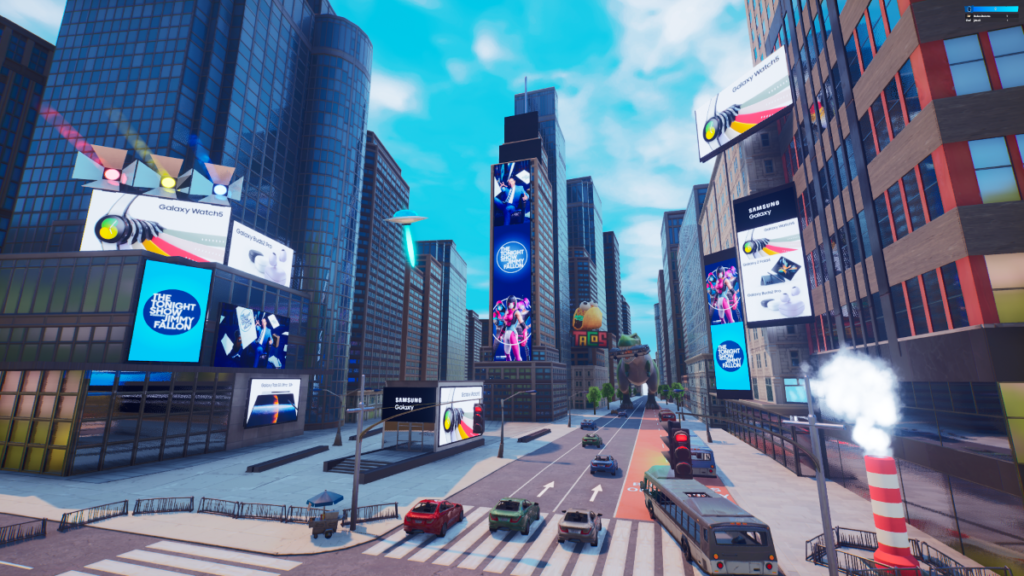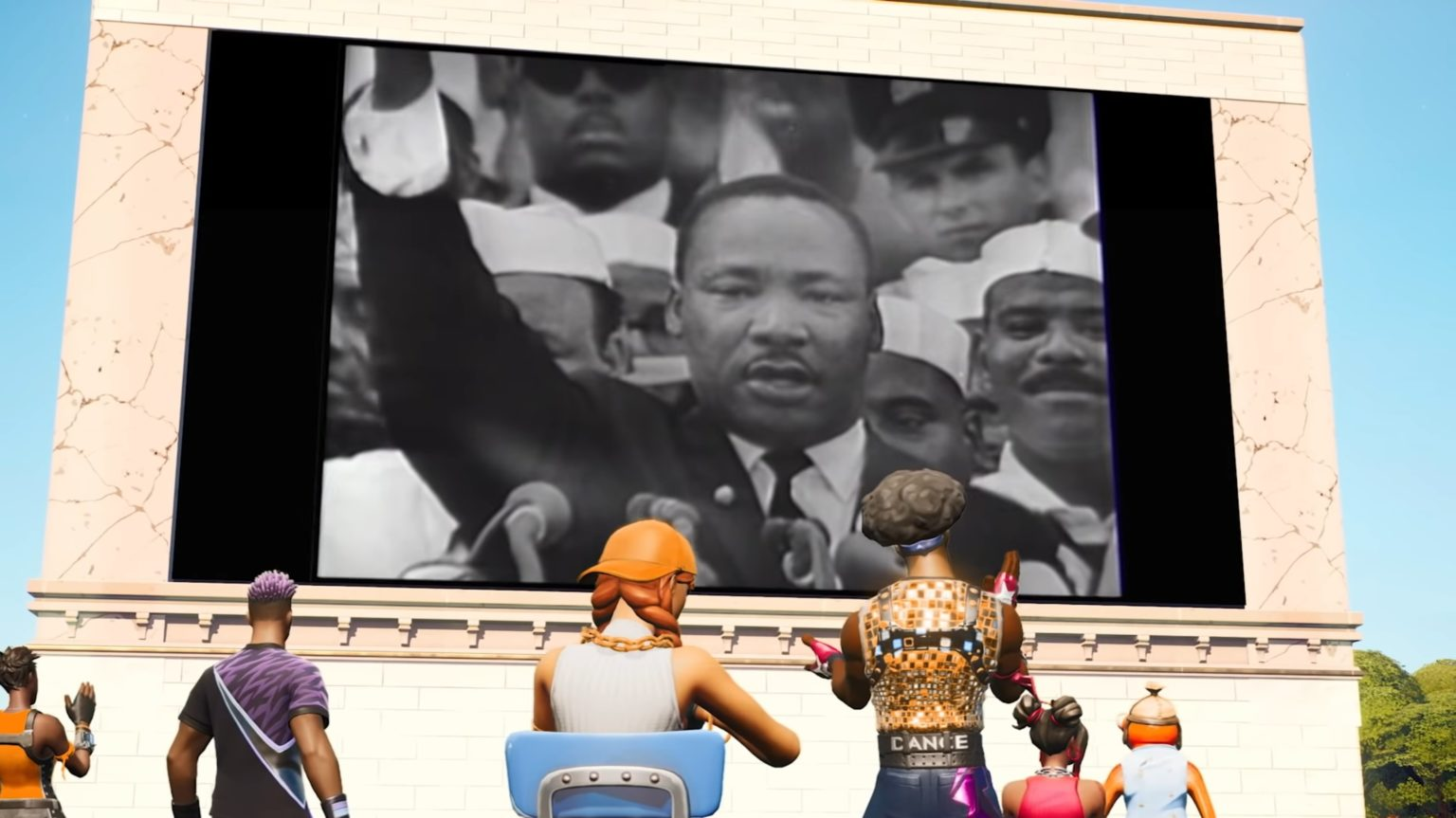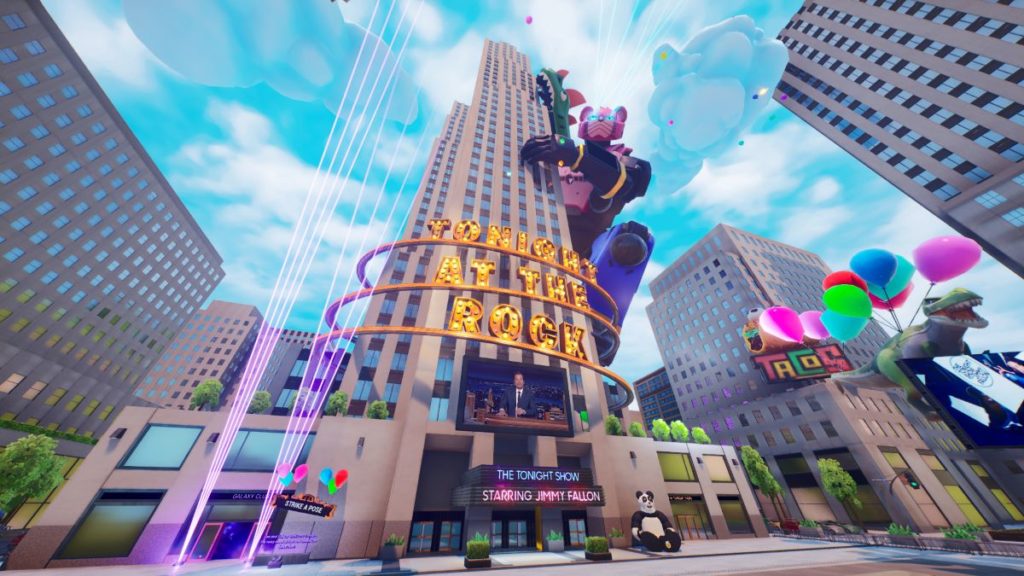The lights got brighter. The enormous cameras swiveled into position. The Roots started playing, and the audience started cheering. Jimmy Fallon emerged onto the stage, and the show was on.
A few weeks ago, I had the opportunity to be an audience member of “The Tonight Show Starring Jimmy Fallon” in New York City. In his opening monologue, Fallon mentioned that they’re “bringing ‘The Tonight Show’ into the Metaverse” without much elaboration. While I understand the statement’s purpose of hyping the launch of whatever they had cooking behind the scenes, the audience was obviously confused. Unfortunately, that’s a common condition of those who hear about the Metaverse, so I took a deep dive into what exactly “The Tonight Show” had planned for the Metaverse.
A Samsung Partnership
The company behind the show, NBCUniversal, partnered with Samsung to develop an interactive experience within the popular proto-Metaverse platform “Fortnite.” Dubbed “Tonight at the Rock,” the experience features a replica of NBC Studios at 30 Rockefeller Center in New York City; Studio 6B where the show is filmed; the writers’ room; a Samsung store; Central Park, and Times Square. “Fortnite” players can engage in a variety of minigames set up throughout the world such as giant pong and helping Fallon get to Studio 6B.
As is so often the case with Metaverse projects, the experience was made as a partnership between groups that, on the surface at least, don’t typically have much to do with each other — in this case, Samsung and “The Tonight Show.” The world was enhanced by power-ups themed with new Samsung products and represents the latest move in Samsung’s larger Metaverse strategy which previously brought pop singer Charli XCX to Roblox for a concert to promote the Galaxy Z Flip3 phone.
“At Samsung, we’re always looking for opportunities to give users one-of-a-kind experiences with their Galaxy devices,” said Janet Lee, senior VP of mobile experience at Samsung Electronics America. “‘Tonight at the Rock’ empowers fans with a unique social adventure right in the heart of 30 Rock, all enhanced through in-game Samsung power-ups made possible by the Galaxy ecosystem. We are so excited to offer late-night fans the first ever interactive ‘Tonight Show’ gaming experience, in a way that honors our longstanding creative partnership.”

Gamification at the Center of the User Experience
One important takeaway from Fallon’s Metaverse foray is the focus on gamification. Nearly all projects these days put play and gaming at the core of their user experience, and for good reason. Well-designed game experiences are among the few media formats that hold sustained attention in younger generations, a particularly difficult demographic to target through traditional channels. That sustained attention drives brand awareness in a way that — if well-designed — is also fun for the end user. It’s a win-win.
Twinning and Promotion in ‘Fortnite’: an Emerging Metaverse Trend
NBCUniversal’s Metaverse project also highlights another important trend: Companies are building digital twins of their products, places, and brands in “Fortnite” to great success.
Nike translated its iconic Air Force 1 shoe line into the game. Travis Scott made an avatar of himself and held a concert. Balenciaga built a virtual store. One of the most unexpected collaborations was between “Fortnite” and Time magazine in the “March Through Time” project, which featured an interactive and educational experience commemorating the life of Dr. Martin Luther King Jr. Many companies are experimenting with virtual storefronts, yet storefronts alone only scratch the surface of what Metaverse commerce could look like.

All of these digital replicas allow brands to create immersive, custom, and user-driven experiences in a cost-effective and low-maintenance way. From this perspective, platforms like “Fortnite” are extensions of e-commerce, providing more of the same benefits to retailers as the internet did.
Crossovers: Another Emerging Metaverse Trend
One unique “Fortnite” aspect that will carry over to future Metaverse platforms is the inclusion of many different brands, intellectual property, and cultural moments. Rather than being siloed into closed ecosystems, “Fortnite” allows users to explore worlds and interact with different characters or trademarks simultaneously. You might see one avatar wearing a Darth Vader skin right beside another with a custom Nike branded outfit, together playing a game of pong on the roof of NBCUniversal’s studio in New York City. This cross-pollination of brands and frenzy of uncommon partnerships is what differentiates platforms like “Fortnite” from traditional video games, and will be a key piece of the Metaverse moving forward.
Maybe you see this as a dystopian overexposure to corporate advertising. I see it as a relief: Finally, young audiences can experience disparate parts of modern culture and history in a single channel that users actually spend more than half a second in. Players get to mingle with characters that live side-by-side in our minds and hearts but are oblivious to one another due to legal borders. Plus, these audiences can enjoy a persistence of identity unmatched in the current internet, as well as more genuine social connections (compared to exchanging text messages to faceless users on chat forums). For organizations, this trend means that marketing departments have to keep their finger on internet culture, making interesting connections with unexpected partners to drive unique user experiences that shine a different light on the world we live in.










